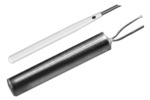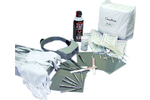- ▶
- Heaters/Source
- ▶
- Agilent Heaters and SensorsMass Spectrometry, Scientific Supplies & ManufacturingScientific Instrument Services 5973 Source Heater Tamper Resistant Allen Wrench 5973/5975 Quad Sensor 5985 Source Heater Assembly Agilent Interface Heater Assembly 5971 Interface Heater
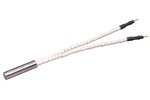
- ▶
- MS Instrument Cleaning Supplies
- Lab/CleanMicro-Mesh® (Fine Cushioned Abrasive) Aluminum Oxide Cleaning Abrasive Fiberglass Cleaning Brushes Swabs and Applicators Nylon and Latex Gloves Cleaning Wipes SIS MS Source Cleaning Kits Dust-Off® Hurricane Canless Air System Wheaton Bottles Wheaton Vials Wheaton Closures Sterile Vials - Bottle, Stopper, and Cap - All Together Certified Sterile Kimble Chase Clear Serum Vials Soil Sampling Kits Crimpers and Decappers Temperature Measurement & Recording Devices Bullet Blender® Homogenizer The SW 110 Multi-Purpose Spot Welder New Era Syringe Pump Systems Ohaus MB Series Moisture Analyzers Celestron® Handheld Digital Microscope (HDM) Checkit® Pipette Accuracy Test Greenwood Lab Supplies Next Advance Lab Products Catalog Page G1
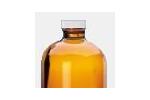
- ▶
- Micro-Mesh®Sheets Rolls Discs Pads Nail Files Tufbuf Micro-Gloss Tape Belts Sanding Swabs Polishing Tool Quick-Shine Buffers Kits - Plastic (power) Kits - Plastic (hand) Kits - Craftsman, Wood, Metal Kits - Automotive & Headlight Restoration Kits Kits - Aircraft Window Reference - Grit Size Reference - MSDS Sheets, Brochures, Instructions, Kits Print Catalog - Micro-Mesh Catalog Page A63 Catalog Page A64 Catalog Page A65 Catalog Page A66 Catalog Page G3 Catalog Page G4 Catalog Page G5 Catalog Page G6 Catalog Page G7 Catalog Page G8
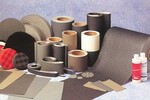
- LiteratureApplication Notes Adsorbent Resins Guide Mass Spec Tips SDS Sheets FAQ MS Calibration Compound Spectra Manuals MS Links/Labs/ Organizations MS Online Tools Flyers on Products/Services Scientific Supplies Catalog About Us NextAdvance Bullet Blender® Homogenizer Protocols Micro-Mesh® Literature Instrumentation Literature Agilent GC/MS Literature SIS News / E-Mail Newsletter NIST MS Database - Update Notifications

- ▶
- Reference - MSDS Sheets, Brochures, Instructions, KitsMicro-Mesh Regular - Description of Micro-Mesh Regular Micro-Mesh MX - Description of Micro-Mesh MX for Metal Finishing Benefits of Micro-Mesh - What Makes Micro-Mesh So Special Ergonomic Benefits of Micro-Mesh - Human Factors, Engineering and Micro-Mesh TufBuf Polishing Pads - Polishing and Buffing Pads Guidelines for Acrylic Finishing Guideline for Making Belts with Micro-Mesh Micro-Gloss Instructions Metal Finishing with Micro-Mesh Random Orbital sanding with Micro-Mesh Solid Surface Finishing with Micro-Mesh Urethane Coating rectification Procedures Wood Finishing Procedures with Micro-Mesh Micro-Mesh Grit Size Conversion Chart Aquarium Restorer Kit Instructions Belt Finishing with Micro-Mesh Burn Kit Instructions Clear Seas Acrylic Kit Instructions Clear Seas Vinyl Kit Instructions Craft Kit Instructions Heavy Damage Removal Kit Instructions Light Damage Removal Kit Instructions KR-70 Acrylic Restoration Kit Instructions Maintenance Kit Instructions Micro-Mesh Anti-Static Cream Final Finish Micro-Finish Micro-Gloss Micro-Gloss # 5 TufBuf Polishing Pad

- ▶
- Maintenance Kit Instructions (This Page)
A. TOOLS REQUIRED:
- (1) Angle Polisher, (Rated at approx. 2500 RPM).
- (1) Compressed Air - 120 pounds per square inch.
- (1) Spray bottle - approximately 10 ounce capacity. (For clean water).
B. LIST OF CONTENTS:
- (1) 4.75 inch diameter Back-Up pad
- (1) TufBuf polishing pad
- (1) White sponge pad
- (8 ounce) Micro-Gloss
- (8 ounce) Anti-Static Cream
- (2) Flannel Cloths
- (1) Kit Parts Reorder Form
- (1) Instructions
C. PREPARING FOR THE BEST RESULTS:
1. To avoid scratching plastic surfaces, do not wear watches, rings, or bracelets. Long fingernails should be covered with gloves.
2. Always keep the work surface and restoral materials clean. Contamination can cause scratches.
3. Work with adequate light. Set a bright light on the side opposite your restoral side. For better viewing on non-transparent surfaces, place the light at an angle.
4. Read the restoral instructions carefully and review the kit contents before starting.
D. THE PROCESS:
1. Attach the TufBuf to the angle polisher. Apply approximately 1 tablespoon of Micro-Gloss to the surface. Buff the surface for 2-4 minutes, using an even sweeping motion. At regular intervals, sweep perpendicularly to the previous motion in order to minimize the chance of distortion. Keep the window damp while polishing in order to avoid heat generation and scratching. Wipe surface clean with dry, flannel cloth, and check for scratches by visually inspecting the surface. If damage is still visible, repeat Steps 1. If after the 2nd application damage still remains, it may be necessary to remove it using our Light Damage Removal Kit, or our Heavy Damage Removal Kit.
2. Attach the white sponge to the polisher. Apply approximately 1 tablespoon of Micro-Gloss to the surface. Buff the surface for 2-4 minutes, using an even, sweeping motion. At regular intervals, sweep perpendicularly to the previous motion in order to minimize the chance of distortion. Keep the window damp while polishing. Wipe surface clean with dry, flannel cloth.
3. Apply Anti-Static Cream sparingly on the surface with the flannel cloth to remove static charge. Clean sponge, TufBuf pad, and flannel cloths with mild detergent and rinse for future use.
E. BENEFITS OF MAINTAINING TRANSPARENCIES:
Pilots and passengers alike need and appreciate the clear and undistorted view that a well maintained transparency provides. Comfort, enjoyment, but more importantly - SAFETY, are all requirements today! The smallest of scratches can lead to crazing. By keeping transparencies smooth and optically clear, through regular maintenance, crazing can be avoided.
06/01/02 - maintenance kit

